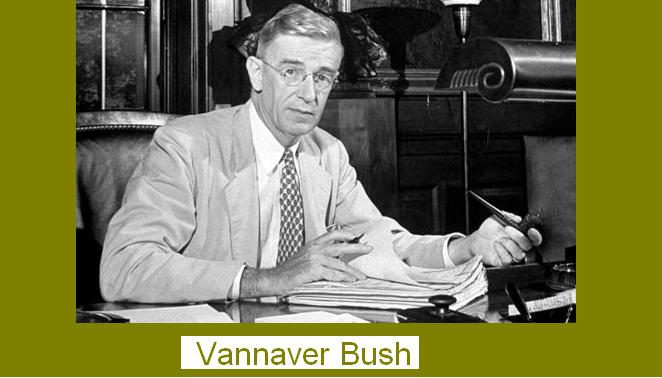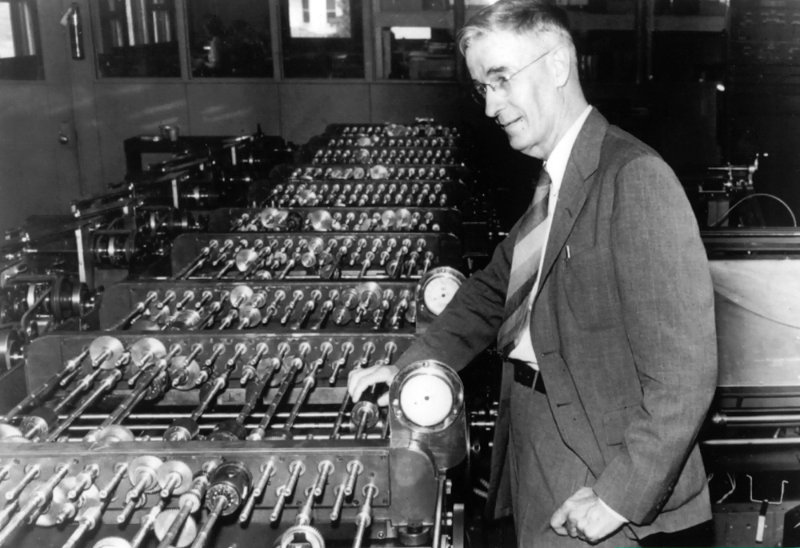Vannaver Bush : Inventor of Digital Analyzer | Famous IT Personalities
Vannaver Bush was an Engineer, an inventor and a science administrator – and he played all these roles perfectly. Born on March 11, 1890, Vannevar Bush was an American who designed the Differential Analyzer and is known in computing for his work on analog computers and for proposing the idea called ‘memex’ which is known as ‘hypertext’. During World War II, he was heading the U.S. Office of Scientific Research and Development (OSRD) from where all military research and development was being carried out during the wartime.
Birth, Education and Work of Vannaver Bush
Vannevar Bush was born in Everett, Massachusetts. After his family moved to Chelsea, Massachusetts in 1892, Bush graduated in 1909 from Chelsea High School .He later completed his bachelor’s and master’s degrees in mathematics in 1913 from Tufts college Massachusetts. Bush invented a “profile tracer” as a part of his Master’s thesis. This device was designed to assist surveyors and was his first invention which was followed by many more.
His first job was at General Electric in New York where he used to assess equipment for their safety. He taught mathematics in Tufts College as his next job from 1914. He also worked at the Brooklyn Navy Yard as an electrical inspector during his summer break in 1915. In 1916, he received his doctorate in engineering jointly from Massachusetts Institute of Technology and Harvard University.
He again joined Tufts in 1916 and also got associated with the American Radio and Research Corporation (AMRAD) later got involved in working on designing a device that could detect submarines.
Bush developed a thermostatic switch while working for AMRAD so as to help the company bear the loss of cancellation of contracts during Wold War I. It got a lot of revenue to the company.
Invention of Differential Analyzer
Bush joined the electrical department of MIT in the year 1919 and later during 1920s and 1930s he worked for designing and building analog computers. Unlike digital computers that allow only a discrete set of values, Analog computers represent data with some physical quantity that is allowed to vary continuously. Originally, Bush had developed the analog computers to solve the complex problems in power lines but gradually his computers were started being used in other domains of engineering as well. One of his most successful invention, the Differential Analyzer became operational since 1931. The differential analyser could solve differential equations having nearly 18 independent variables.
In his entire lifespan, Bush had 49 electronic patents.
MEMEX Concept
In the 1930s, Bush introduced his idea of memex which had a structure similar to hypertext and was a hypothetical microfilm viewer. He imagined meme as a form of augmented memory. He wanted it to work like human brain- to store data by association unlike the hierarchical storage paradigms that stored data or indexes. His intention was to use memex as a tool as well to study the brain.
He wrote an article called “As we may think”, stating his thoughts about the potential that augmented memory could have. This article was published in Atlantic Monthly in 1945. He predicted that “wholly new forms of encyclopedias will appear, ready made with a mesh of associative trails running through them, ready to be dropped into the memex and there amplified”.
Architect of the military-industrial complex
In 1939, Bush proposed to form an organization called the National Defence Research Committee (NDRC) to Roosevelt. He became the chairman once NDRC was formed in 1940. Next year, the Office of Scientific Research and Development (OSRD) was created and Bush was made its director. While heading NDRC and OSRD, Bush started the Manhattan Project. In 1945, he presented a report to the President of the United States called Science, The Endless Frontier, in which he insisted in creating the National Science Foundation.
On June 28, 1974, Bush died after suffering from a stroke.
In 1980, Vannaver Bush Award was created by the National Science Foundation in order to honor Bush’s contribution to public service.


